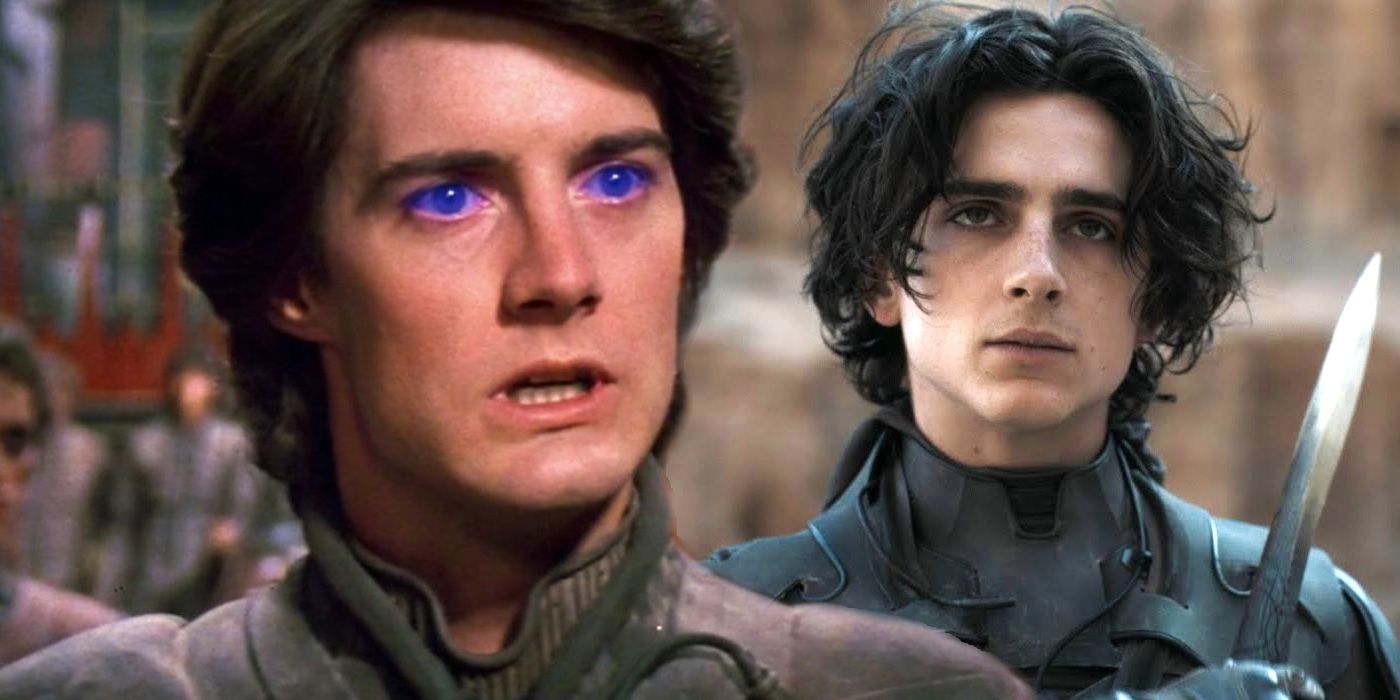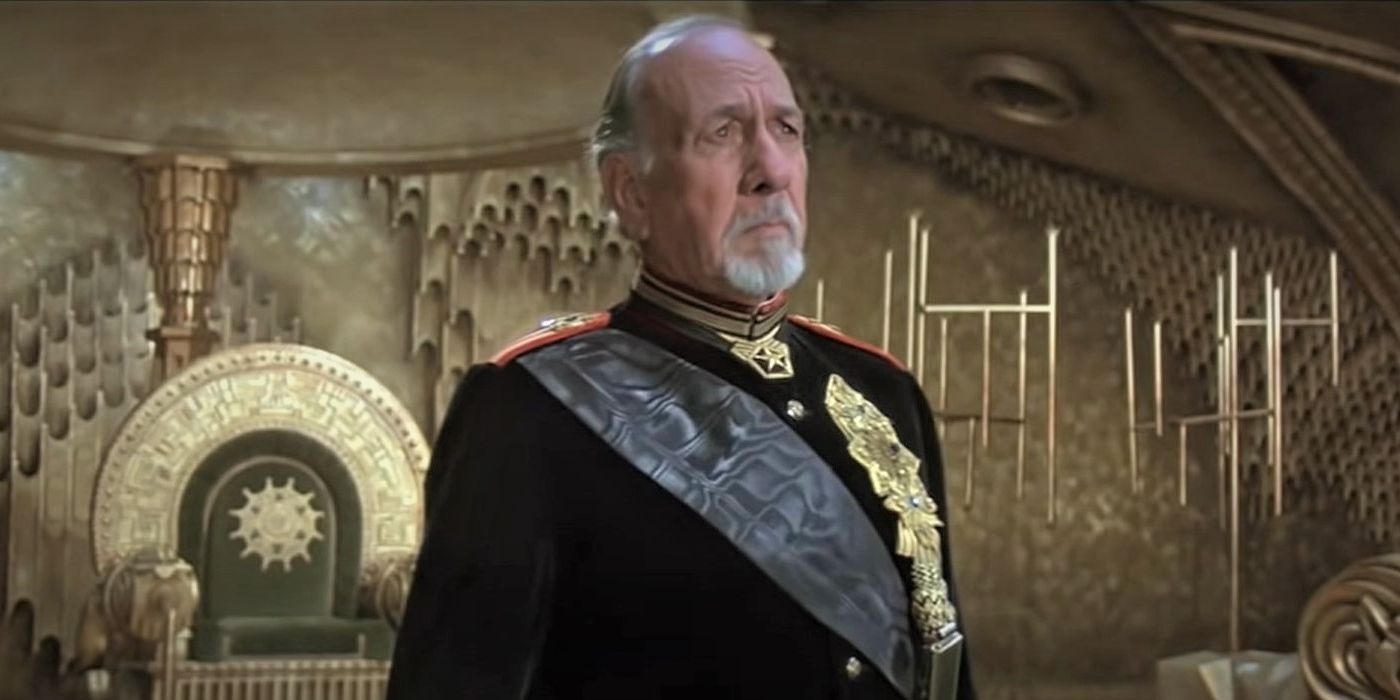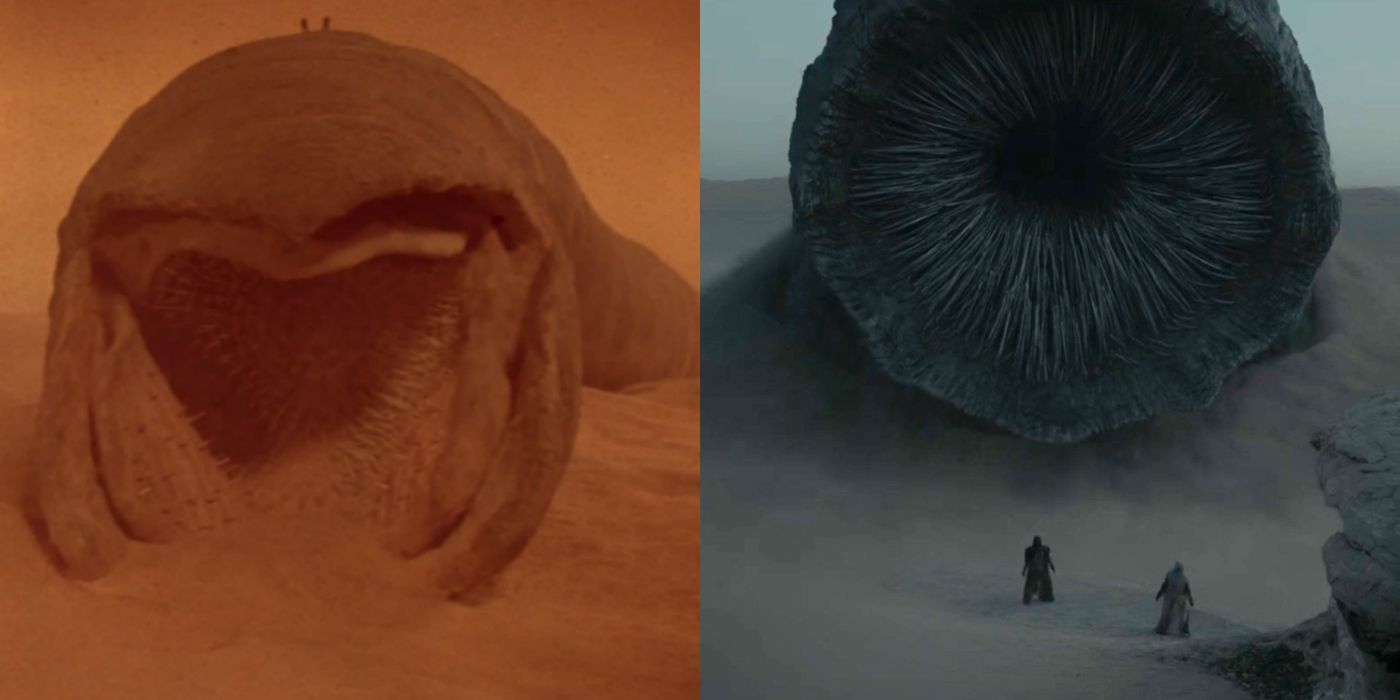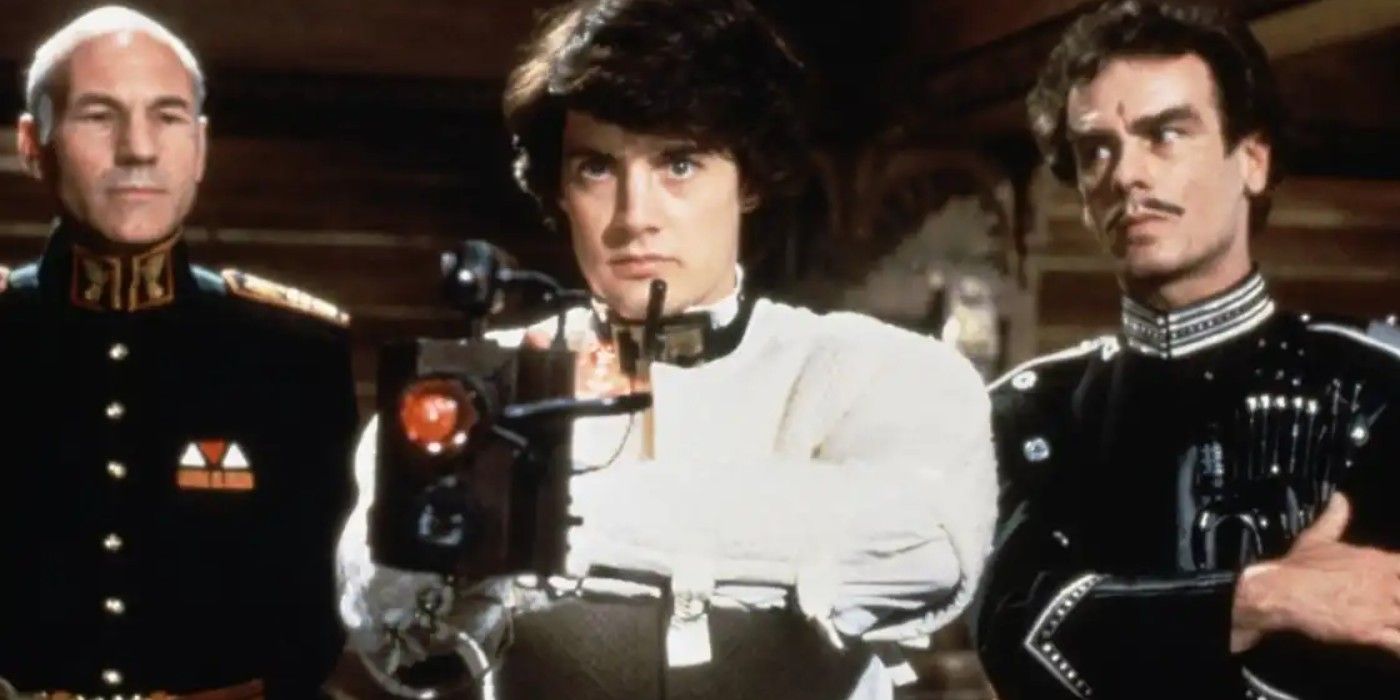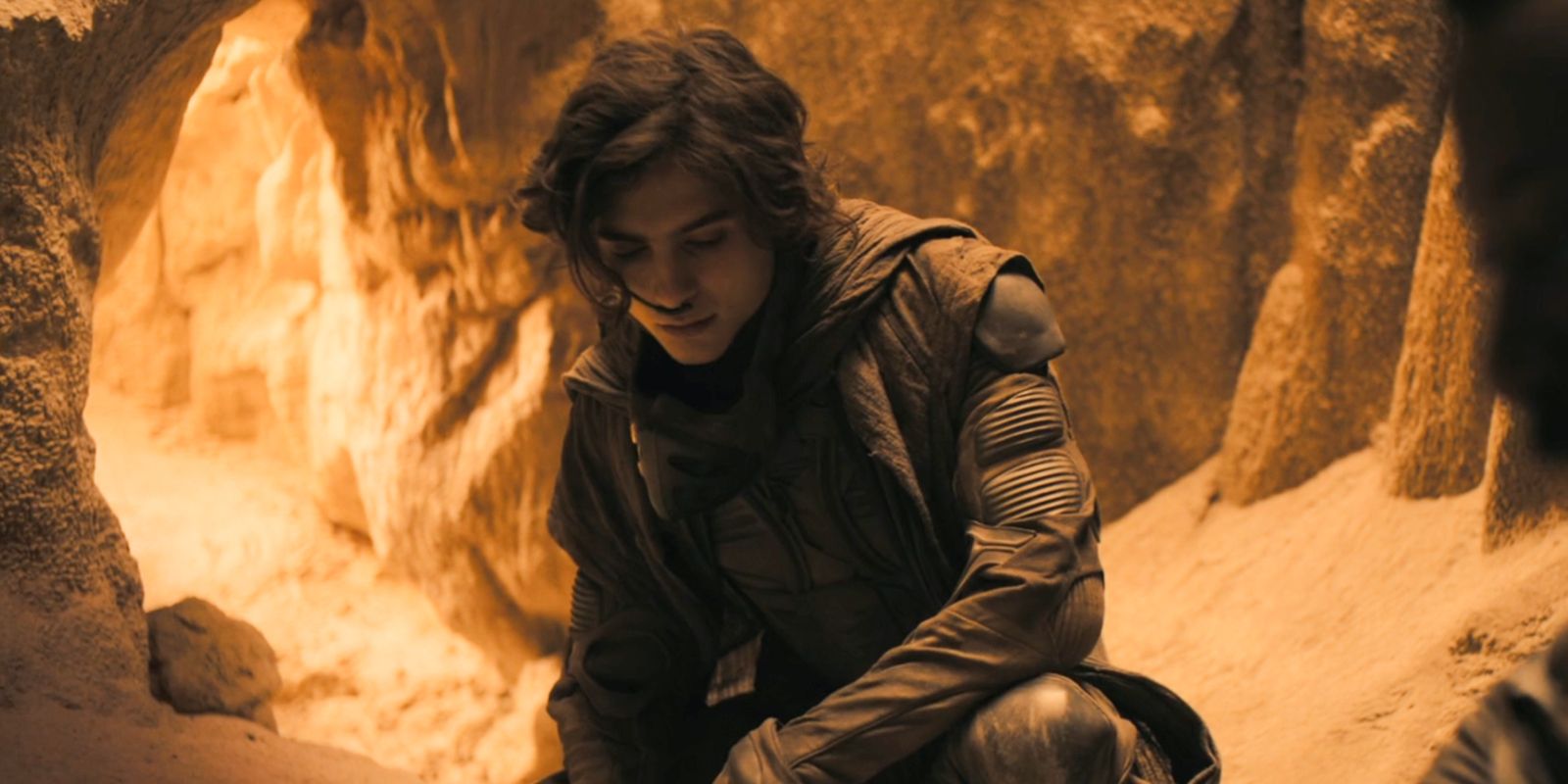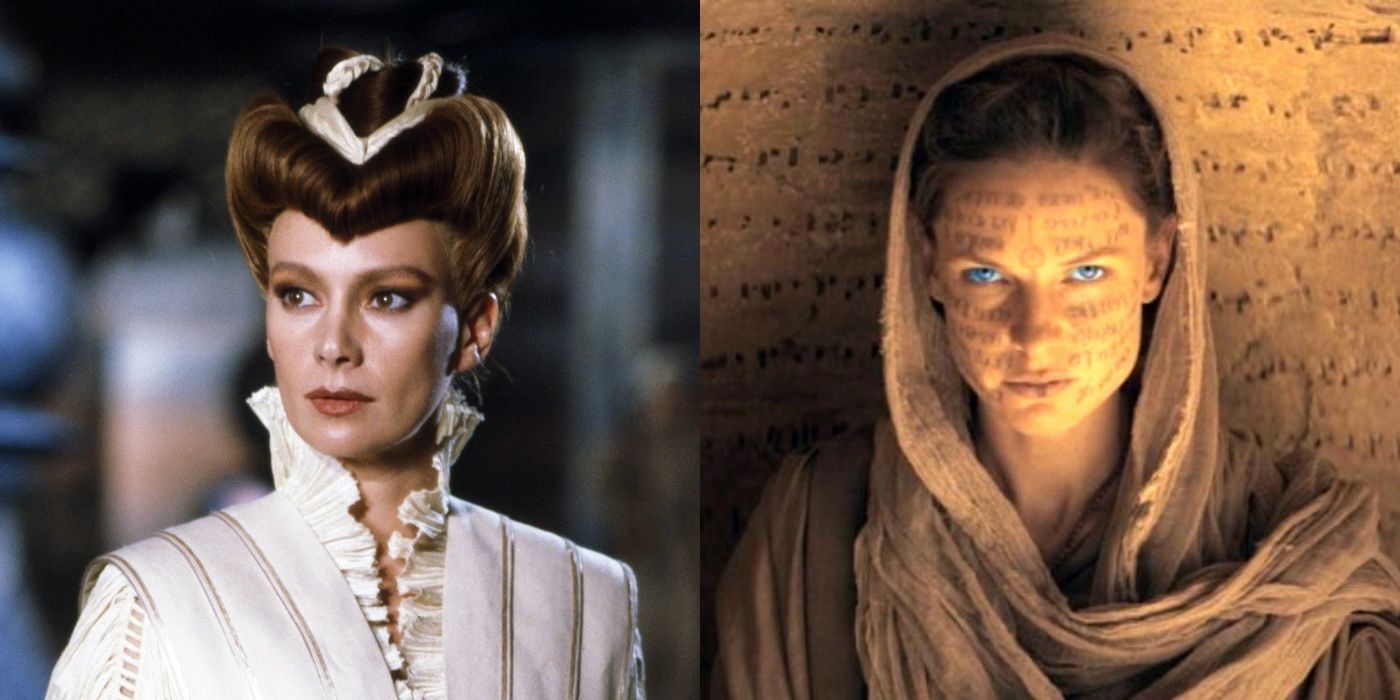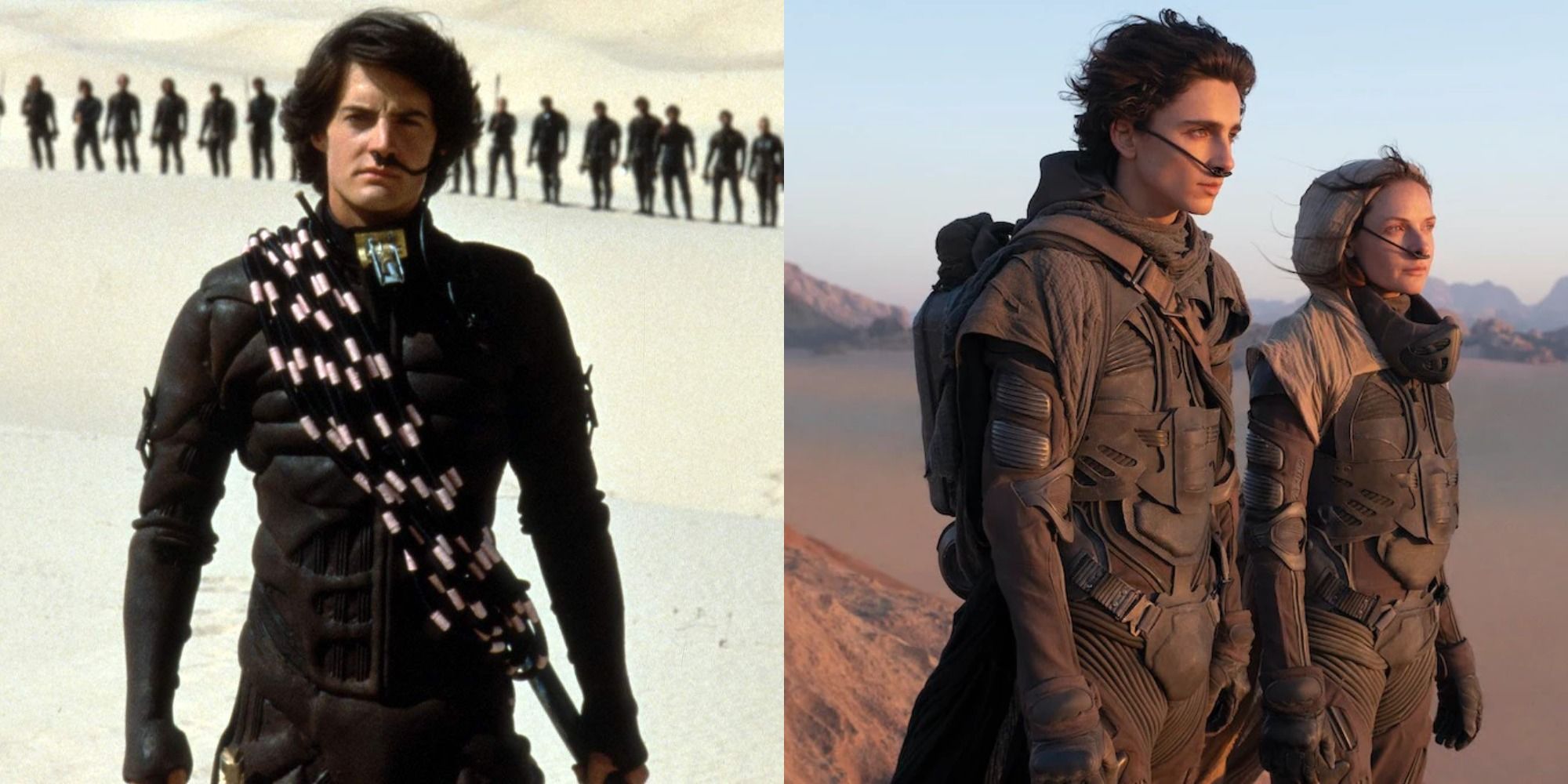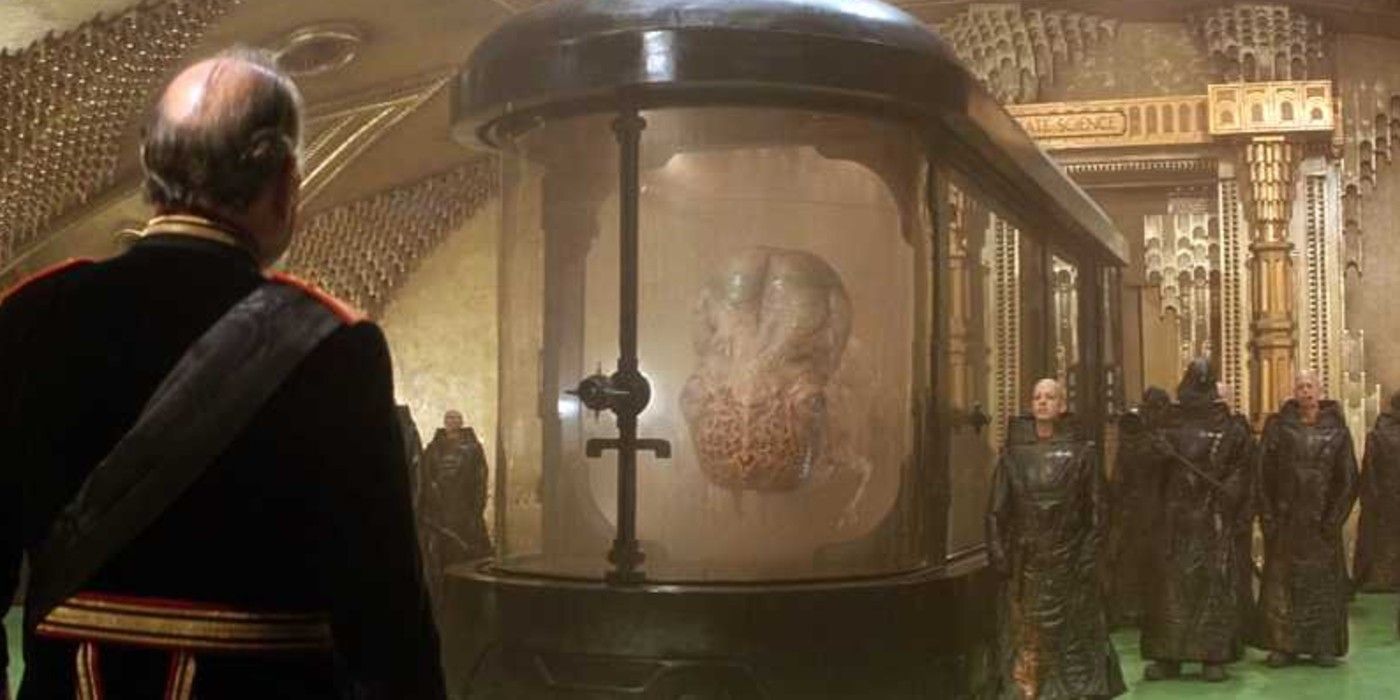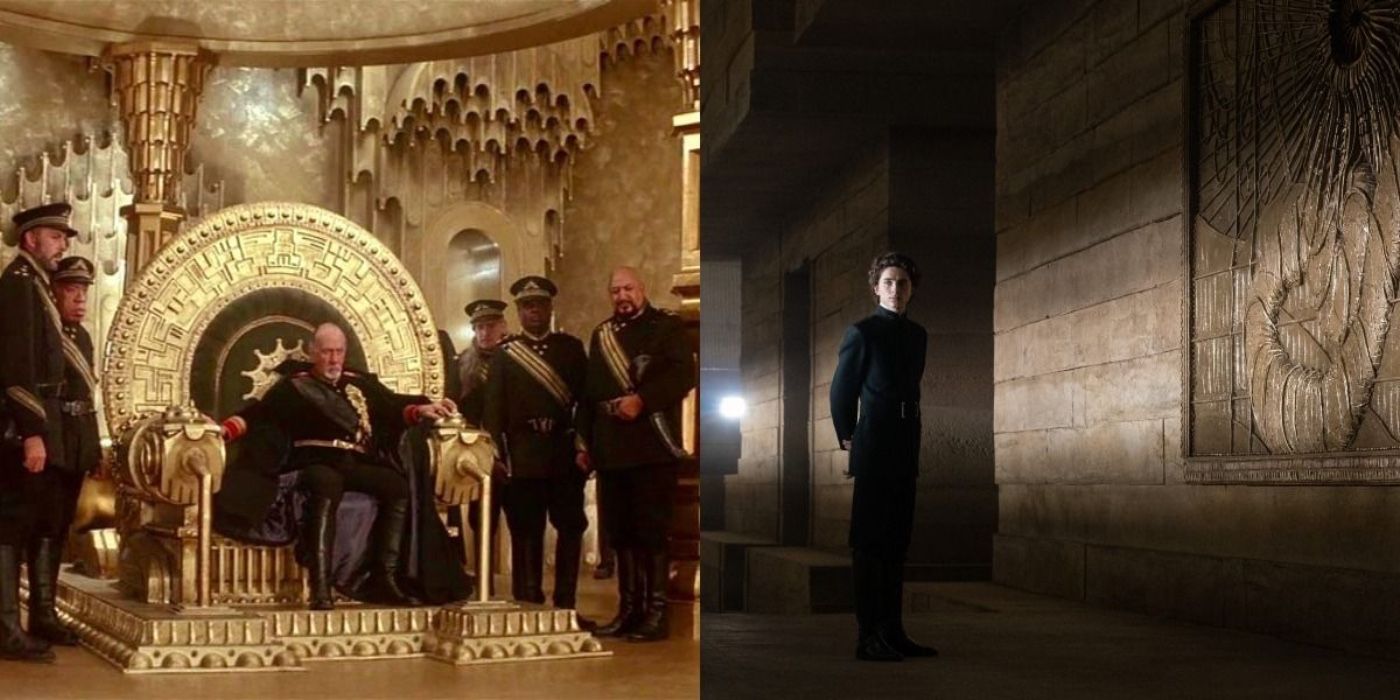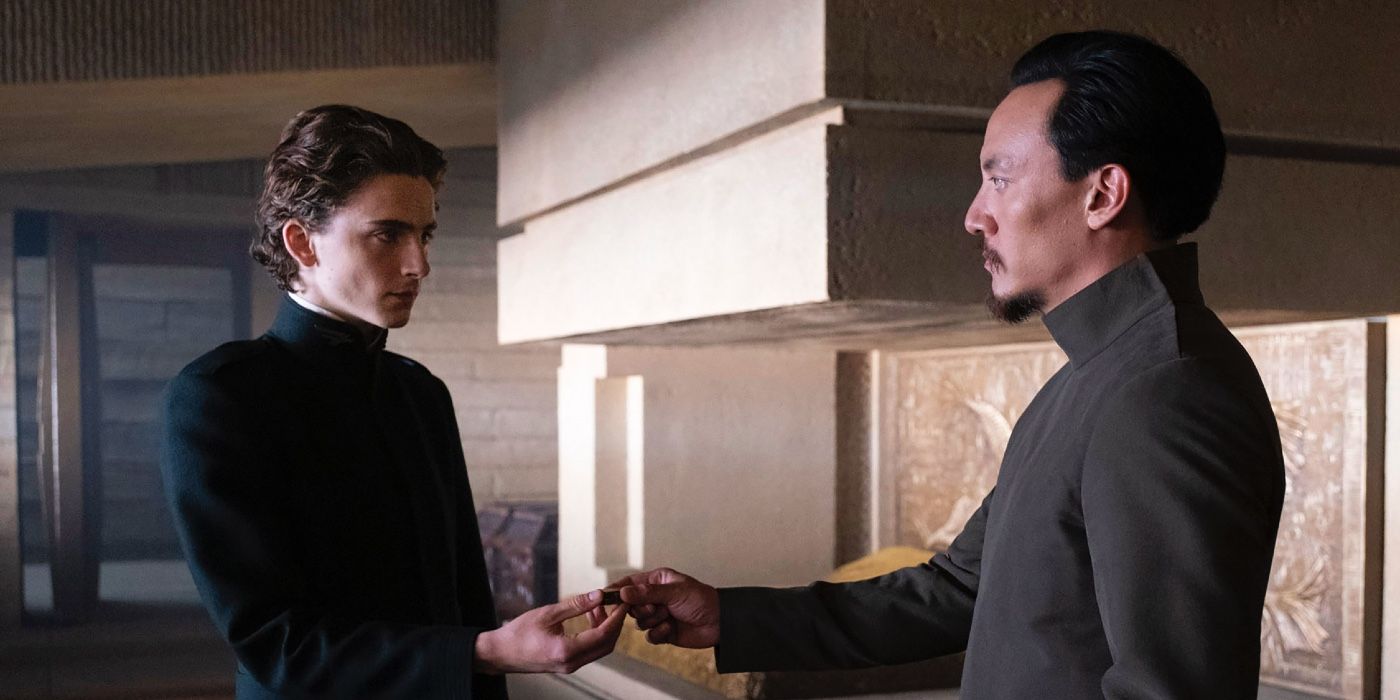Summary
- Dune 1984 vs. 2021: Different depictions of Baron Harkonnen and Emperor - 2021 version focuses on subtlety and intelligence, while 1984 version is more grotesque and includes more exposition.
- Different designs of sandworms - 1984 version has flower-like mouths, while 2021 version has round tunnels with sharp teeth.
- The Weirding Way and internal monologues - 1984 version showcases the Weirding Way and uses frequent internal monologues, while 2021 version leaves out the Weirding Way and opts for more emotional resonance in the actors' performances.
Frank Herbert's sci-fi epic Dune has gotten two theatrical adaptations so far and there are notable differences between Dune 1984 vs. 2021. In 1984, director David Lynch, known mostly for small-budget movies involving body horror, set out to adapt Herbert's intimidating novel. Lynch's original version was over 14 hours and required heavy cutting, so the movie fans received needed a great deal of exposition to be understood. Though its H.R. Giger-inspired aesthetic and certain creative liberties taken with the source material made it divisive, Lynch's take has developed a cult following.
In 2021, director Denis Villeneuve decided to see if he could conquer the novel that had been deemed unfilmable, resulting in critical and financial success. Unlike Lynch, Villeneuve didn't try to fit the entire book into one movie but instead split it into two parts which, when combined with his own unique visual style and narrative decisions more faithful to Herbert's work, made for some notable differences between the two versions of Dune. While fans will come to their own conclusions on which adaption is superior, seeing how two master filmmakers approached the massive source material differently is fascinating.
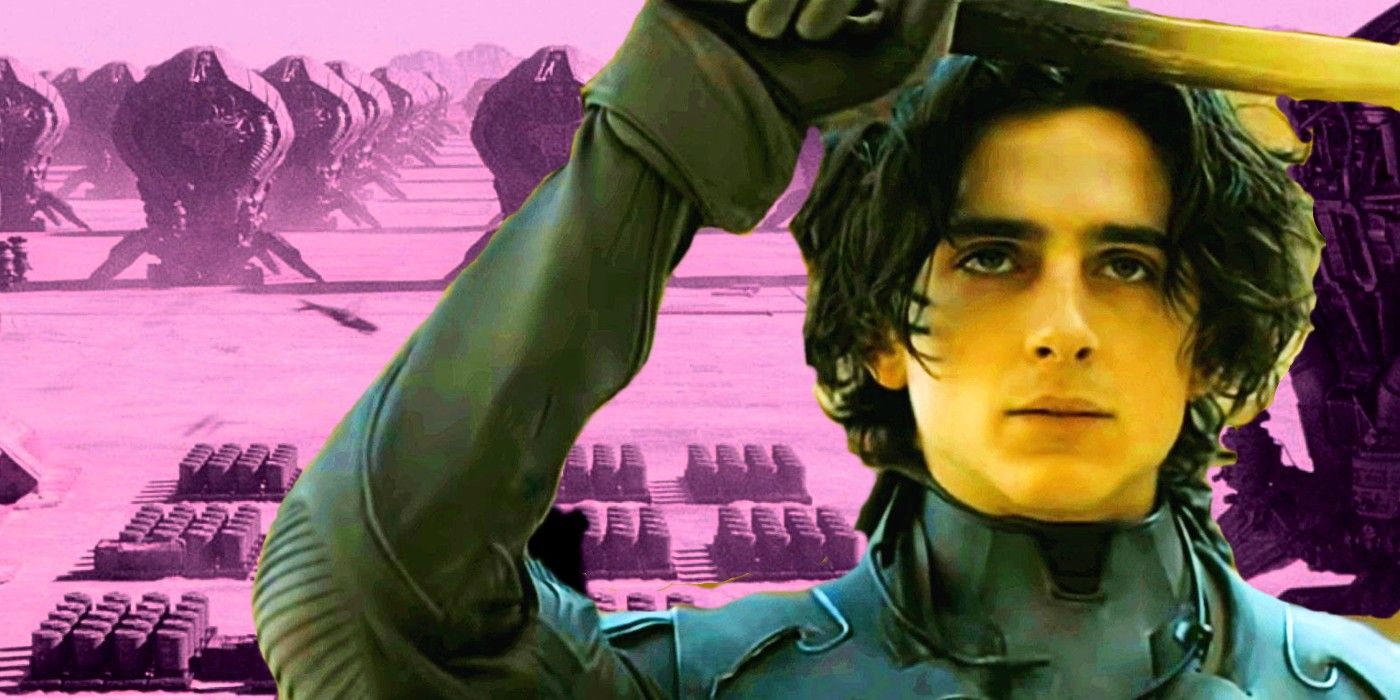
Dune Part 2: Release Date, Cast, Story, Trailer & Everything We Know
Denis Villeneuve's Dune only tells half the story from the original novel by Frank Herbert. The story continues in 2024's Dune: Part Two12 Baron Harkonnen's Look & Demeanor
A More Cunning And Less Grotesque Baron Is Introduced In 2021
As he's depicted in Dune 1984, Baron Harkonnen (Kenneth McMillan) is a truly disgusting man with boils all over his face and a tendency to torture animals and people. A scene depicting him sexually violating a young man not only shows his complete disregard for others (it's also heavily implied he lusts after his youngest nephew) but what book readers know is entirely accurate to Herbert's Dune. McMillan's portrayal is a stark villain, whose outsides accurately depict just how depraved his insides are.
However, Dune 2021 took a much different route bringing Harkonnen's wicked character to the screen. Baron (Stellan Skarsgård) is still villainous, but rather than be a murdering psychopath, he's intelligently manipulative. Any hints at his sexual appetites have been removed and the way Harkonnen floats in Dune adds an eerie aspect to the character. However, Skarsgård's characterization of the Baron is also much more subtle and cunning than McMillan's. He doesn't get very much screen time by contrast, but he helps establish House Harkonne's participation in the Emperor's master plan to crush House Atreides.
11 The Emperor Isn't Included
Villeneuve Is Saving The Emperor For Part Two
The Emperor, the person responsible for sending House Atreides to Arrakis, appears in Dune 1984 (played by legendary actor Jose Ferrer) outlining his scheme to set House Atreides up to fail. However, Villeneuve doesn't feature the Emperor in his first movie at all but does mention him, incorporating parts of this conversation into dialogue with other characters. Lynch tried to stay as close to Herbert's novel as he possibly could, resulting in a 14-hour-long sci-fi epic that had to undergo massive cuts. However, Villeneuve obviously didn't feel that the Emperor's role was needed to properly tell the story.
Padishah Emperor Shaddam Corrino IV is a prominent part of the book and is said to have turned on House Atreides because Gurney Halleck and Duncan Idaho trained a fighting force to rival his Sardaukar army. Dune 1984 goes into this exposition in exhausting detail. It's not essential to have the Emperor in Dune 2021 because the exposition he offers happens in other ways, but this also makes viewers less likely to understand his motivations.
While the character's role in the first half of the story was removed, Christopher Walker will play Emperor Shaddam IV in Dune: Part II. Villeneuve actually made the more book-accurate choice, since the character is often mentioned more than he's seen in the first half of the novel.
10 The Sandworms Look Different
Lynch And Villeneuve's Designs Of The Creatures Differ Drastically
The sandworms from Dune 1984 and 2021 are some of the most iconic creatures in all of science fiction, and Dune 1984 features them prominently. Not only are they regularly seen, but they're also vital to Paul Atreides taking back Arrakeen from House Harkonnen. In Lynch's adaptation, the Dune sandworms have mouths that look like flower petals and are filled with sharp teeth. In 1984, the VFX that went into creating the Dune sandworms was an impressive achievement, using practical effects models, blue screens 35 feet high, and miniature sets.
By contrast, sandworms are seldom seen in Dune 2021, perhaps out of a desire to keep them as mysterious threats. At the big moment when one is eventually seen, its mouth is simply a round tunnel of hundreds of thousands of sharp teeth. Unlike in Lynch's movie, audiences will have to wait for Part 2 to see if Paul (Timothée Chalamet) learns how to ride one.
It's quite possible that Villeneuve is keeping these famous creatures under wraps to properly wow audiences with Dune 2. Villeneuve's sandworms are much more formidable looking than Dune 1984's with their thousands of teeth and are more visually accurate to what Herbert describes.
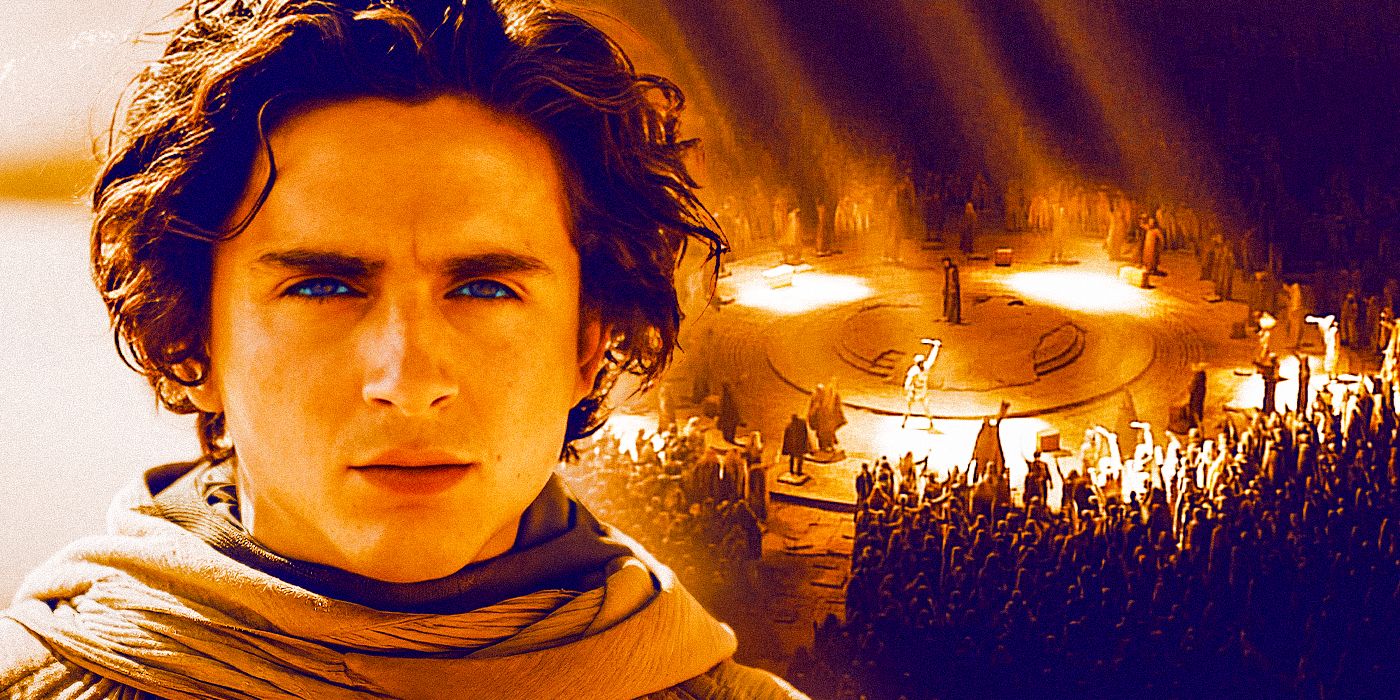
Dune 2's Most Hyped Scene Won't Even Be The Best In Denis Villeneuve's Sequel
Dune 2 promises even more of the spectacle that made the first film such a hit. However, one of the most hyped scenes probably won't be the biggest.9 The Weirding Way Isn't In The 2021 Version
Lynch Embraces The Unique Bene Gesserit Technique
The Weirding Way, a form of movement that combines physical and psychological training, was an aspect of the Bene Gesserit that Lynch depicted as a sonic beam weapon called the Weirding Module. As Paul Atreides (Kyle Maclachlan) tells the Fremen, "Some thoughts have a certain sound. That being the equivalent to a form. Through sound and motion, you will be able to [kill] your enemy." He then fires the Weirding Module at a stone, shattering it in Dune 1984.
For whatever reason, Dune 2021 decides to leave out the Weirding Way entirely. Villeneuve does feature the Voice, another deadly component of Bene Gesserit teachings, but chooses to leave out any aspect of the Weirding Way. This doesn't necessarily mean that Paul and Jessica don't use the Weirding Way technique, it just oddly isn't mentioned by name. While it is another aspect that could be included in Villeneuve's second Dune movie, it seems unlikely that they would wait to introduce a strange concept like this so late in the story without mentioning it before.
8 1984 Had A Constant Internal Monologue
Lynch Paid Homage To Herbert's Writing In Frequent Voice-Over Narration
An interesting thing that happens quite frequently in Dune 1984 involves accessing characters' thoughts through internal monologue. They're often direct quotes from Herbert's book and something that Dune 2021 completely does away with. The constant internal monologue in Dune 1984 was divisive for audiences. Fans of Herbert's novel found the extra character exposition refreshing and a respectful way to pay homage to the source material. Others thought the narration cut too much into the action and detracted from the story.
The internal monologues in Dune 1984 highlight a big aspect of Herbert's book that would have been lost in the visual medium of film, but they can be jarring, and they don't allow the actors a chance to emote. In Dune 2021, the actors come across as much more emotionally resonant because they aren't staring vacantly into space while their inner monologue plays. Like the original, Dune 2021 does still contain narration. The opening to Dune 2021 contains a narration sequence from Chani (Zendaya), whereas Dune 1984 gave this dialogue to Princess Irulan.
7 Lady Jessica Is More Prominent In 2021
Villeneuve Amplifies Lady Jessica's Role
In Dune 1984, Lady Jessica (Francesca Annis) has only a handful of scenes, most of which involve Paul in the desert. Her most important scene occurs when she becomes the new Reverend Mother of the Bene Gesserit and gives premature birth to her daughter as a result. Dune 1984 saw a much more passive Jessica, despite the fact that she was integral to Paul's mission and training. It's odd, as Lady Jessica had a much larger role in the book than what Lynch put to the screen.
Dune 2021 makes Lady Jessica (Rebecca Ferguson) an essential part of the plot and a strong mentor for Paul both before and after his father's death. Herbert wrote strong female characters, but that strength wasn't always conveyed through their actions, especially since the power structure in his world favored men. Villeneuve's Lady Jessica is made much more than "Leto's concubine" by showing how Paul gets the strength to face his trials. It's through Jessica that Paul learns just about everything needed to know to complete his mission and save his family and his people.
6 Feyd Rautha And Alia Are Missing In 2021
Key Heroes And Villains Are Missing From The 2021 Version
Since Dune 1984 is a complete film, Lynch includes two important characters from the book's second half; Feyd Rautha (Sting), Baron Harkonnen's power-hungry nephew, and Alia Atreides (Alicia Witt), Paul's little sister with all the power of the Reverend Mother. Alia, in particular, plays an important role in the story of Dune. During the invasion of the palace on Arrakeen, Alia poisons Baron Harkonnen with a Gom Jabbar and kills dying soldiers on the battlefield for their water.
Feyd Rautha is one of the most notable new additions to the story in Dune: Part 2 with Oscar nominee Austin Butler taking on the role. The character's look is different from how Sting appeared in 1984 with Butler appearing more inhuman. The fight between Paul and Feyd is also being built up as an exciting confrontation. However, despite the star-studded cast list for the sequel, there has been no confirmation of Alia in Dune: Part 2. She seems to be too important of a character to remove from the story, but Villeneuve may be taking a much different approach.
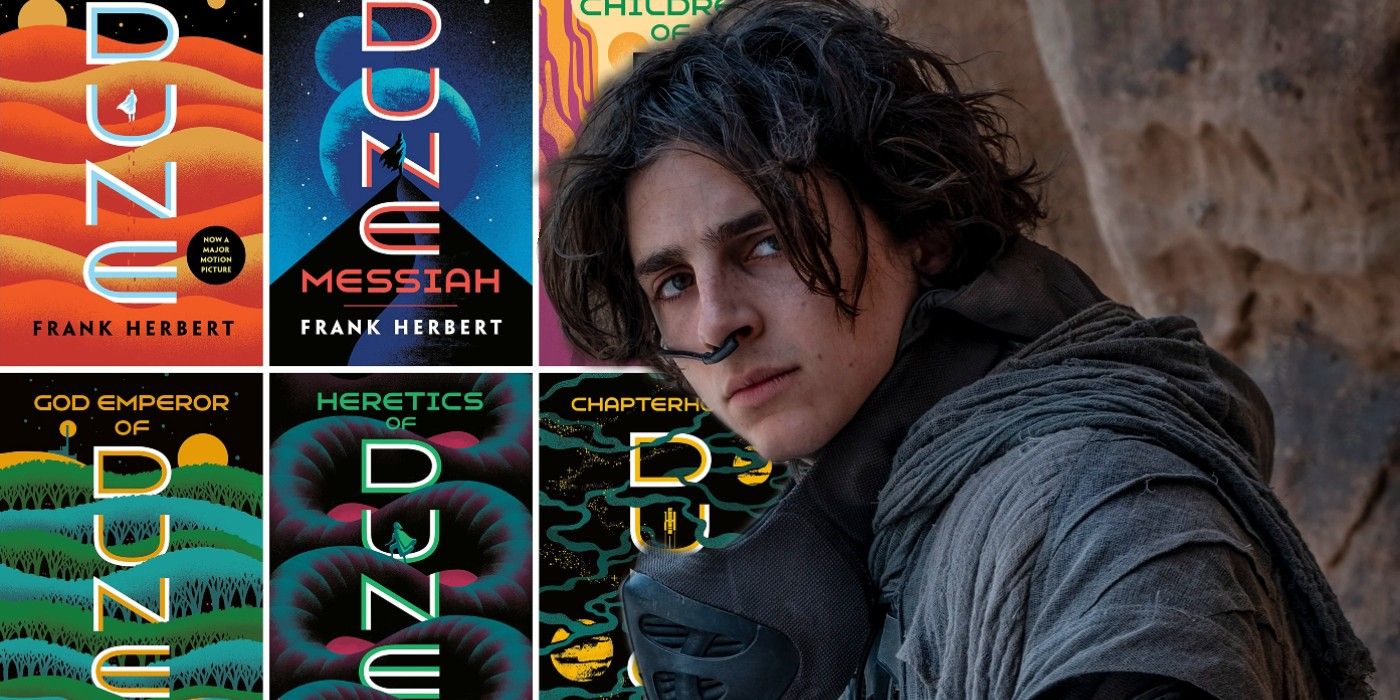
Every Dune Book Ranked Worst To Best
The Dune series launched a massive sci-fi franchise. With more films and TV shows in development, here are the six books ranked from worst to best.5 Dune 2021 Only Covers Part Of The Novel
Which Dune Adaptation Is Longer?
Due to Dune 1984 being a complete retelling of the tale, it has a beginning, middle, and end. It, therefore, includes several more characters from Herbert's book but also relies a great deal on spelling things out. For instance, Lynch shows what's happening in Paul's mind in the Gom Jabbar sequence with the Reverend Mother whereas Dune 2021 leaves it up to viewers' imagination. However, Lynch's ambitious undertaking of course resulted in an overly-long film that had to be cut down to a more palpable 2 hours and 17 minutes, with a 3-hour-long extended cut available.
Villeneuve prefers to reveal his plot by showing the actions of his characters rather than relying on expository dialogue, so it makes sense that Dune 2021 is not only longer, but saves quite a bit of the novel's plot for later. Dune 2021 successfully covers the first half of the narrative woven in Herbert's novel and leaves the rest of the story to be told in his sequel.
Of course, this does leave some lingering questions for those who haven't read the book or seen Dune 1984. What happened to Gurney Halleck, and how Paul Atreides will lead the Fremen against House Harkonnen are questions for Dune Part 2.
4 The Guild Navigators Are Gone In 2021
Lynch Brought One Of Herbert's Strangest Concepts To Life
An incredibly impressive — for the time — scene in Dune 1984 involves a Guild Navigator speaking with the Emperor, and later making the journey from Caladan to Arrakis possible for House Atreides by folding space and time. Villeneuve's version leaves the entire conversation (and the Guild Navigator) out. Funnily enough, author Frank Herbert enjoyed Lynch's idea that the Guild Navigators had different stages so much that he incorporated it into his later books. It's unknown why Dune 2021 decided to get rid of the Guild Navigators.
It's possible that the film was already overstuffed with new sci-fi concepts and chose to spare audiences from more. Guild Navigators, high-ranking superhumans mutated from years of consuming spice, are mentioned throughout Herbert's first novel but only given a full description in Dune Messiah, where it's revealed they have elongated, fish-like bodies and are suspended in tanks filled with melange-infused liquid to enhance the prescience that makes interstellar travel possible. Villeneuve's decision to leave this out is more faithful to the first book, but it does lessen the impact of Dune's world-building by having fewer otherworldly entities.
3 The Visuals Are Unique In Each
It Isn't Just Because Of The Eras
Given the particular aesthetics of both Lynch and Villeneuve, each adaptation stands out as visually unique. Dune 1984 is ornamental, sometimes overly so, full of intricate matte paintings and over-the-top costuming. Some aspects, like anything to do with Baron Harkonnen, are so visually intense as to be unsettling to look at. Though they do help it feel more "alien." Dune 1984's aesthetics have a tendency to lean into the body-horror genre, and it looks like the film is set in a sort of futuristic Victorian England. The opulence of Lynch's aesthetic was completely scrapped for Dune 2021.
Dune 2021 also has similar attention to detail, but his movie is barren by contrast, meant to magnify the expansiveness of Arrakis. His cavernous interiors, which often dwarf the actors, help to make the movie seem larger than any one person in it. His visual effects are some of the most state-of-the-art in cinema today, though Lynch made the most of what he could and had some of the top visual effects artists of the '80s bringing his movie to life. The end result is the same story told in two visually unique movies made by two very different filmmakers.
2 Diversity Of The Cast
Dune 2021's Star-Studded Cast Highlights The Expansive Universe
Diversity and inclusion wasn't considered in 1984 in the same way that it is currently. Therefore, it's appropriate that Dune 2021 saw a more diverse cast of characters than its predecessor. Dune 1984 saw the legendary Max von Sydow portray the de-facto leader of the Fremen and planetologist Dr. Liet Kynes. However, the character who was originally Chani's father was played by Sharon Duncan-Brewster in Dune 2021, and it's presumed she will be revealed as Chani's mother in Dune 2.
The character of Dr. Wellington Yueh is another that saw a casting change. In Dune 1984, the Baron's agent and Leto's doctor is played by white actor Dean Stockwell. Dune 2021 saw Taiwanese actor Chang Chen take over the role in Villeneuve's Dune cast. When it comes to book accuracy, Dune 2021 did a better job of getting the ethnicity of Dr. Yueh correct. While it's not explicitly stated in certain terms that Yueh is of Asian descent, Chen better ascribes Herbert's description of the character than Stockwell did.
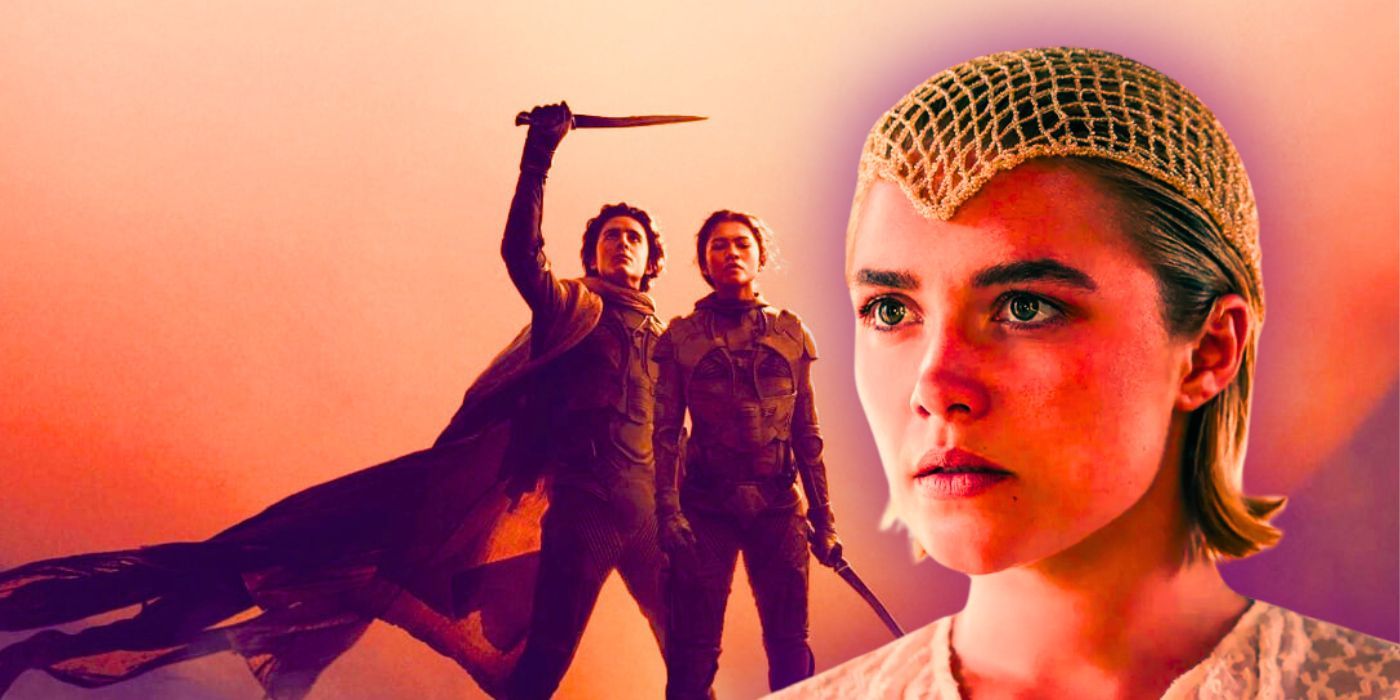
Denis Villeneuve's Dune 3 Plan Will Make The Third Movie Even Better
With fans wondering if Denis Villeneuve will adapt Frank Herbert's other novels, the director's Dune 3 plan is set to make the third film even better.1 Dune 2021 Uses Different Languages
Lynch Avoided The Multiple Languages Of The Universe
There are several different languages spoken in Frank Herbert's book series yet Dune 1984 decided to use none of them. In a surprising departure from the source material, Lynch decided for whatever reason to keep all dialogue in English for Dune 1984. Within Herbert's universe, there's Galach, the Fremen language, Chakobsa, sign language, and other neo-languages created by houses. Dune 1984 doesn't bother delving into any of Herbert's linguistic mythos.
Dune 2021, on the other hand, features several different spoken and signed languages. Dr. Wellington Yueh speaks Mandarin to Paul, and Jessica uses sign language. Sardakaur language is used a handful of times by the soldiers in the Imperium and during the conversation between the bashar and Piter de Vries, and the Fremen are shown speaking their own language.
David J. Peterson, who created Dothraki and Valaryian for Game of Thrones, was hired to create the languages used in Dune 2021 (via Slashfilm). This was a stellar decision by Villeneuve, as including them is a stark reminder to audiences that the story of Dune is taking place in another world.
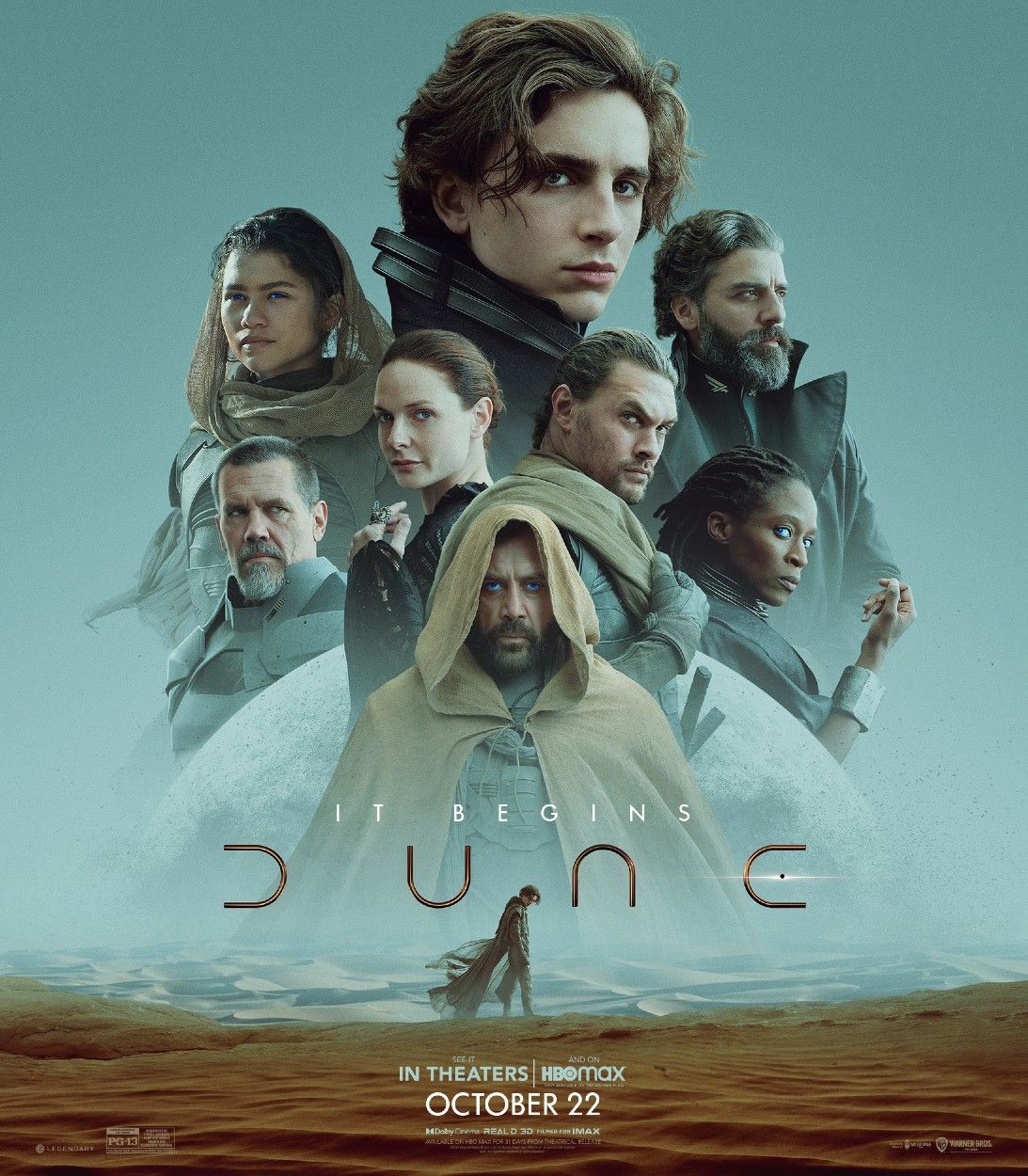
Dune
Dune the big-screen adaptation of Frank Herbert’s seminal bestseller of the same name. A mythic and emotionally charged hero’s journey, Dune tells the story of Paul Atreides, a brilliant and gifted young man born into a great destiny beyond his understanding, who must travel to the most dangerous planet in the universe to ensure the future of his family and his people. As malevolent forces explode into conflict over the planet’s exclusive supply of the most precious resource in existence—a commodity capable of unlocking humanity’s greatest potential—only those who can conquer their fear will survive.
- Release Date
- October 22, 2021
- Director
- Denis Villeneuve
- Cast
- Dave Bautista , Rebecca Ferguson , Sharon Duncan-Brewster , Jason Momoa , David Dastmalchian , Stephen McKinley Henderson , Stellan Skarsgård , Charlotte Rampling , Chang Chen , Oscar Isaac , Zendaya , Javier Bardem , Timothee Chalamet , Josh Brolin
- Runtime
- 155 minutes

